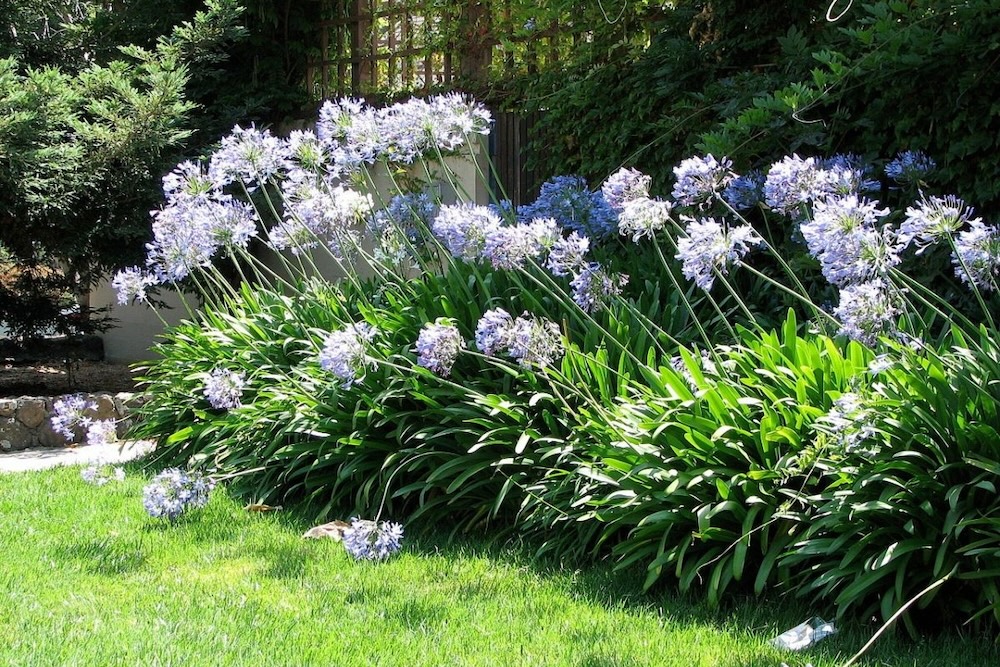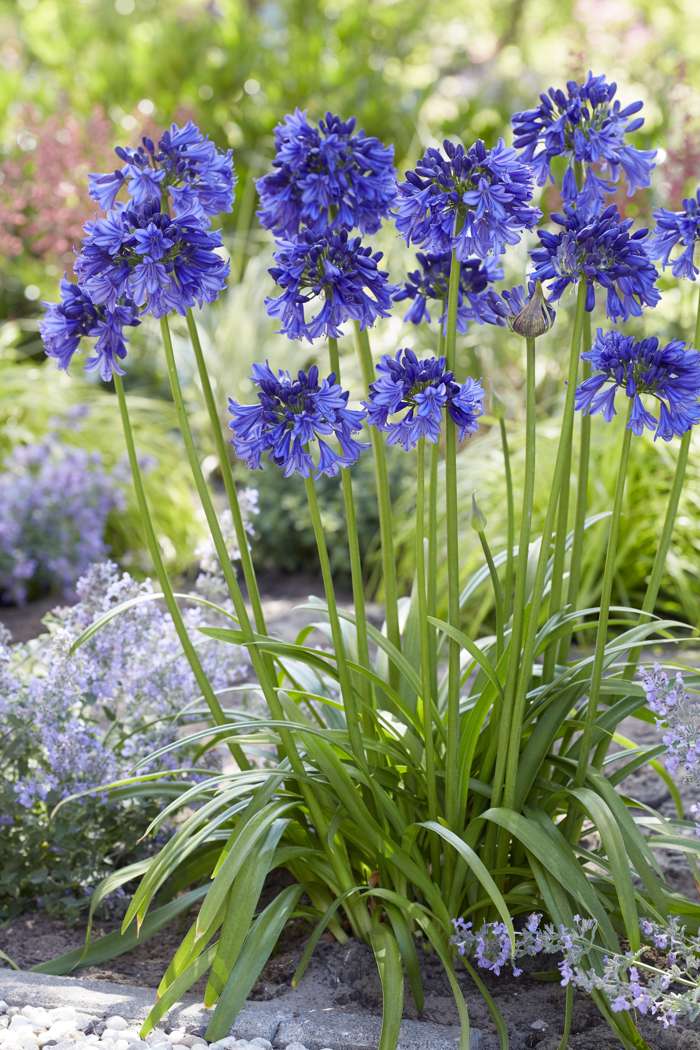Agapanthus Friend Plant Kingdoms: Perfect Pairings for Your Garden
Agapanthus Friend Plant Kingdoms: Perfect Pairings for Your Garden
Blog Article
Understanding the Art of Agapanthus Treatment: Necessary Actions for Healthy And Balanced Development and Vibrant Blooms
In the realm of horticulture, the growing of agapanthus stands as a rewarding venture for those that look for to nurture these sophisticated flowering plants. With their striking blossoms and graceful vegetation, agapanthus has actually recorded the attention of garden enthusiasts worldwide. However, attaining optimal growth and vivid blooms needs a nuanced approach that includes different crucial steps. From picking the ideal range to understanding trimming techniques, the trip in the direction of growing flourishing agapanthus plants is diverse and holds the essential to unlocking the full potential of these organic treasures.

Picking the Right Agapanthus Variety

When choosing the ideal Agapanthus variety for your garden, think about factors such as climate viability, flower color, and development routine. Additionally, take into consideration the environment in your area to make sure the Agapanthus selection you choose can prosper in your certain conditions. Recognizing the development practice of various Agapanthus selections is crucial for appropriate placement within your garden.
Ideal Planting Conditions
Considering the optimum environmental demands is crucial for effective Agapanthus growing. Agapanthus thrives in well-draining soil with a somewhat acidic to neutral pH degree. When planting, select a location that obtains complete sunshine to partial color. In hotter environments, offering some afternoon shade can avoid scorching of the fallen leaves. Agapanthus plants are sensitive to chilly temperature levels and need to be secured from frost during cold weather.
To guarantee healthy development and dynamic flowers, plant Agapanthus bulbs at a depth of concerning 2-4 inches and area them 8-12 inches apart. Mulching around the base of the plants helps retain moisture and suppresses weed development.
Watering and Feeding Tips
Keeping appropriate moisture degrees and supplying necessary nutrients are crucial elements in the treatment routine for Agapanthus plants. It is critical to strike a balance when it comes to sprinkling Agapanthus. These plants choose regularly damp soil but are at risk to root rot if overwatered. During the expanding period, water deeply as soon as a week, ensuring the soil is well-draining to avoid waterlogging. In hotter climates or during durations of drought, even more constant watering may be necessary to maintain the dirt evenly wet. Nonetheless, reduce watering in the winter months to avoid waterlogged problems.
Fertilizing Agapanthus is vital for promoting healthy growth and prolific blooms. Apply a well balanced fertilizer, such as a 10-10-10 formula, in the early spring as brand-new development emerges. Repeat this application every 6-8 weeks throughout the growing season. Avoid extreme fertilizing, as it can result in lush vegetation at the expenditure of blossoms. Constantly comply with the manufacturer's directions for proper dilution and application methods. By complying with these watering and fertilizing ideas, you can ensure your Agapanthus plants flourish and produce dynamic, resilient flowers.
Pruning Techniques for Agapanthus
Pruning Agapanthus plants at the suitable times and with appropriate methods is critical for keeping their health and wellness and promoting optimum growth and blooming. The perfect time to trim Agapanthus remains in late winter months or very early springtime before new growth arises. Begin by getting rid of any dead or yellowing fallen leaves near the base of the plant. Cut them as close to the ground as feasible without harming the emerging shoots.
Deadheading invested flowers can also reroute the plant's power right into generating more blooms rather than establishing seeds. If you desire to gather seeds for propagation, leave some blossoms to dry and mature on the plant.
Remember to utilize tidy, sharp devices to make exact cuts and minimize the danger of presenting illness. Agapanthus. Routine pruning will certainly help keep your Agapanthus looking neat and healthy and balanced additional info while making certain a plentiful display screen of lovely blooms
Handling Usual Parasites and Illness
After guaranteeing appropriate trimming methods for Agapanthus, it is necessary to deal with typical pests and conditions that can affect the health and wellness and vitality of these plants. Agapanthus plants are usually sturdy however can still succumb particular concerns. One common pest that impacts Agapanthus is the Agapanthus gall midget. This small, orange fly lays its eggs in the foliage, bring about distorted development and blossom buds that stop working to open up. To combat this insect, prune and destroy any kind of damaged plant components and take into consideration using insecticidal soap.
An additional usual concern is fungal leaf spot, which presents as dark lesions on the fallen leaves. To avoid fungal illness, guarantee good air circulation around the plants, avoid overhanging watering, and eliminate any infected fallen leaves promptly. Furthermore, Agapanthus plants can suffer from origin rot if they are i thought about this planted in poorly draining pipes soil. To avoid this, plant Agapanthus in well-draining dirt and stay clear of overwatering. By being attentive and taking timely action versus diseases and bugs, you can assist your Agapanthus plants grow and generate vivid blooms.

Verdict
To conclude, grasping the art of agapanthus treatment involves choosing the appropriate variety, providing perfect growing conditions, appropriate watering and feeding, ideal pruning strategies, and attending to common parasites and illness. By adhering to these crucial actions, you can make certain healthy growth and vivid blossoms for your agapanthus plants. Remember to routinely keep an eye on and maintain your plants to promote their total wellness and longevity.
To ensure healthy development and dynamic blossoms, plant Agapanthus bulbs at a deepness of regarding 2-4 inches and room them 8-12 inches apart. By complying with these watering and fertilizing suggestions, you can guarantee your Agapanthus plants prosper and generate vibrant, resilient flowers.
One common parasite that impacts Agapanthus is the Agapanthus gall midge. Additionally, Agapanthus plants can endure from root rot if they are planted in poorly draining dirt. By complying with these essential actions, you can make certain healthy and balanced development and lively blossoms for your check my reference agapanthus plants.
Report this page